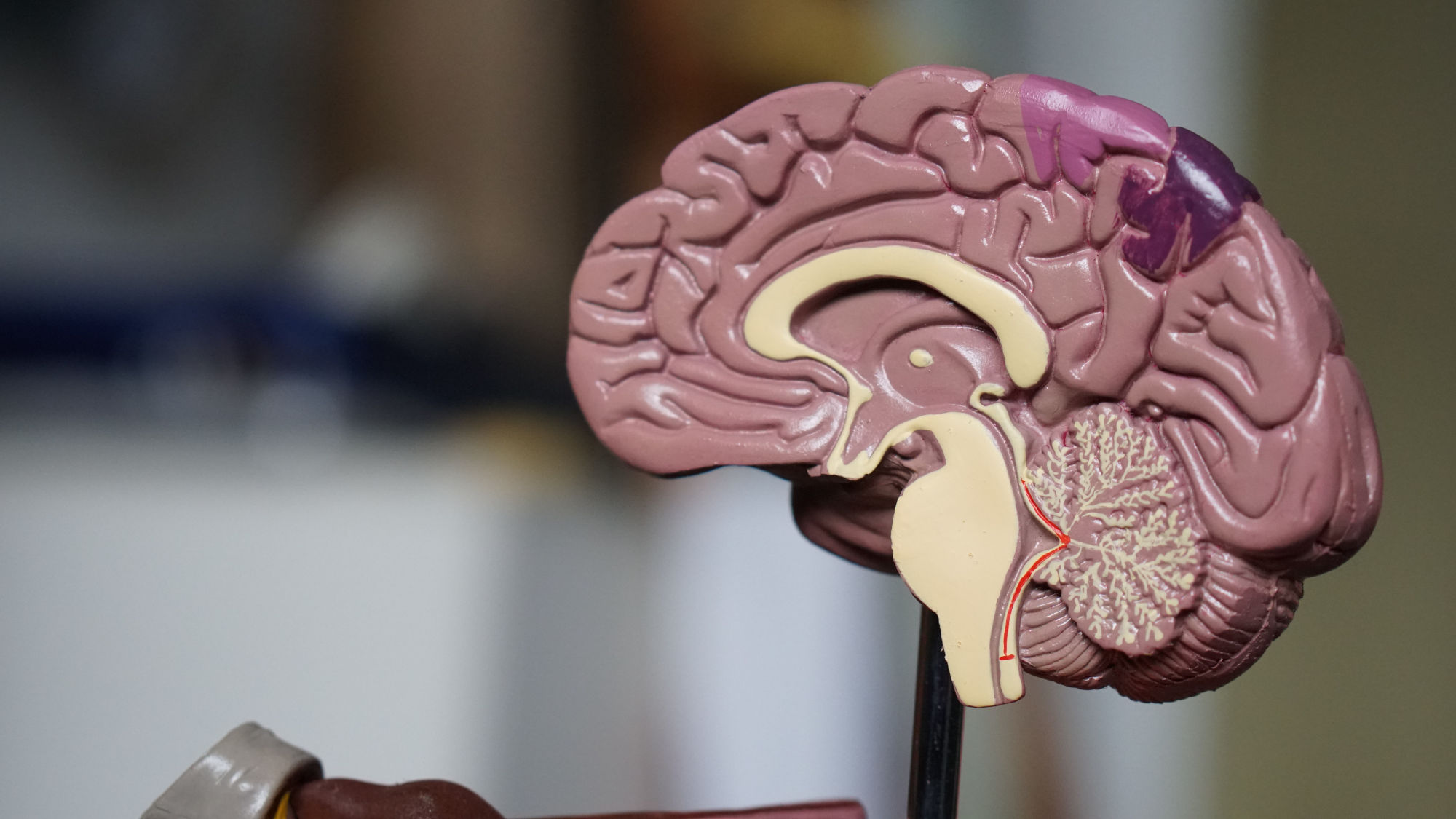The brain is the beautiful result of billions of years of evolution. But how does it work? In this article, I want to explore my understanding of how the brain operates. The brain is made up out of multiple parts, each with its own task, and each comprised of many cells. In this article, however, I want to mainly focus on the cells of the brain and in particular one specific type of cell, the neuron. For those who came here hoping to find out what a neuron is, understand that this article is not written by someone with a strong knowledge of neuroscience and that it is part of a series of articles exploring my basic understanding of how the brain works and how humans behave and interact. This is not an in depth article about the neuron.
As I wrote, our brain is made up out of multiple segments, each responsible for their own task. These brain segments work together. They communicate together to form a signal that can travel through all parts of the brain, but also through the body in the form of nerves.
Although I will not explore what these brain segments do in this article, that does not mean that it is not important to find out exactly how the signal travels from sensor (eye, ear, etc.) to “processor” and memory. But for the sake of this series, however, I will just assume that a certain external stimulus or internal thought will enter into the appropriate part of the brain, wherever that may be, and propagate the signal to the long term memory.
Brain cells
As I understand it, all these brain segments are mostly made up out of different types of cells, being neurons and so-called glial cells. These glial cells are believed to support neurons in executing their functions. The neurons are not all the same, and depending on which part of the brain we are talking about, their properties can differ. But for the hypothesis that I want to present, this plays only a small part.
The neuron
Neurons are believed to be the main drivers of the brain. They play an important part in making the body move, since they send pulses that ultimately end up in the muscles. They also play a central part in the creation of memory. But how they do that?
To explain how I think this works, I will explain how each (important) part of the neuron works. The parts I want to write about are: the soma and its membrane, membrane channels, dendrites, the axon, and the synapse. Lastly, I want to talk about a property of synapses called synaptic plasticity.

Soma
The body of the neuron is called the soma. The soma is held together by a sort of skin, called the membrane.
For the function of the cell, the soma houses atoms called ions. An ion is an atom (or molecule) that has one or more extra electrons or is missing it or them, making the atom positively or negatively charged. If the ion has an extra electron, it is negatively charged and if it is missing one, it is positively charged. Opposite ions attract, equal ones repel.
Outside the neuron, there are also ions. Because the inside of the neuron has a different distribution of ions than outside the neuron in the brain fluid, there is a difference in charge between the inside of the neuron and the outside. This charge difference leads to certain ions wanting to flow into the neuron from the outside and some ions wanting to flow from the inside to the outside. The membrane prevents this from happening.
Membrane channels
In the membrane of a neuron, there are many molecules that allow the flow of ions into or out of the neuron. These molecules are called channels. These channels can be always open, or open only when there is a certain difference in charge between the inside of the neuron and the outside. This way, the charge of the neuron dictates which channels are open and which are closed.
Dendrites
Attached to the soma are the dendrites. The dendrites are where a signal from an attached adjacent neuron is received. They can do this because they are covered in channels that allow the formation of what is called a synapse. Dendrites are not the only place where a signal can be received. There are also channels on the body of the neuron that can form a synapse and receive a signal.
Axon
The axon is the tail of the neuron. The neurons in the human brain only have one axon.
The axon in human neurons can be very long. They can reach over a meter in length, though most are smaller. Bundled together, axons are sometimes referred to as nerves.
The axon is attached to the soma at a point called the axon hillock. The membrane around the axon hillock is covered in channels that allow the entry of certain ions that will rapidly charge up the neuron. This charge is necessary to create something called an action potential that the neuron propagates over the entire length of the axon.
When a neuron fires, it is in the axon hillock where the charge starts. From here, these ions are attracted to a different channel further up the axon that opened up at a specific charge. Their arrival opens up two other types of channels. One lets more ions in that get attracted to similar channels further up the axon. The other dumps other ions out of the axon. This dumping happens right behind the action potential, thereby immediately repolarizing the neuron. This creates a wave of charge through the axon.
To facilitate the rapid transport of the action potential, the axon can be covered by a glial cell called the oligodendrocyte with an isolating substance called myelin. This myelin makes it that the action potential can reach its destination quicker.
At the end of the axon are the axon terminals. These axon terminals are covered in channels that can be used to communicate a signal to other neurons, when it connects to channels that can receive that signal. The axon terminals can connect to the dendrites of the other neurons or to their bodies. This connection is called a synapse.
Synapse
A synapse is the connection between the axon terminals of the so called presynaptic neuron (the one that sends the signal) and channels on the postsynaptic neuron (the one that receives the signal). A synapse is the place where one neuron can try to make another fire or try to prevent it from firing. There are multiple sorts of synapses and I will not explain them all, since it doesn’t really matter to the overall idea I am going to present, nor am I knowledgeable enough to do so. What is important to know, however, is that these synapses work in similar ways. When the presynaptic neuron fires, it will send a signal to all connected neurons. As I understand it, it depends on where the synapse is formed if the presynaptic neuron will try to make the other neuron fire or try to prevent it from firing. This is dependent on the postsynaptic neuron and where the presynaptic axon terminals are connected to form the synapse. When they are connected to the dendrites, then, if I have correctly understood it, they will try to make the postsynaptic neuron fire. If they are connected to the body, they will try to inhibit it.
Multiple neurons can try to make one neuron fire together, or one can try to make another fire by repeatedly exciting the same synapse.
The strength of the signal per firing depends on, as I understand (and I hope I got this right), a property called synaptic plasticity.
Synaptic plasticity
When one neuron excites another to such a degree that it fires, the synaptic bond between the two becomes stronger. The signal will either be extra strong, or extra inhibitory. I will not get into how this works exactly, since it involves some complicated processes that I do not really understand, but I basically see this as widening of piping in an intricate web of pipes. If the pipe widens at a certain area, it can push more water through.
The more a neuron can make another neuron fire, the stronger the plasticity gets. There is therefore a degree of plasticity in a certain synapse between two neurons.
The amount of time that plasticity can remain without being “exercised” is variable. Some can last for seconds, others for years.
Synaptic plasticity has long been associated with the formation of memories. I will also argue that this is the case and will suggest a rough way in which this could be accomplished in upcoming articles in this series.
On to the micro memory
So this is roughly how neurons work. And it is especially this property called synaptic plasticity that I find interesting. If our senses pick up external stimuli that excite neurons in the brain, and these excited neurons cascade deeper into the brain, this would send a signal into the long term memory that carves out a pattern of plasticity like lightning hitting sand. Similar stimuli would create similar “lightning strikes”.
In the next article, I want to explore this idea further. I want to write about the idea of snapshots of internal or external stimuli called micro memories, and see in which way they must affect the plasticity in the long term memory. So on to the next article: the intricate pattern of the brain: the micro memory.





